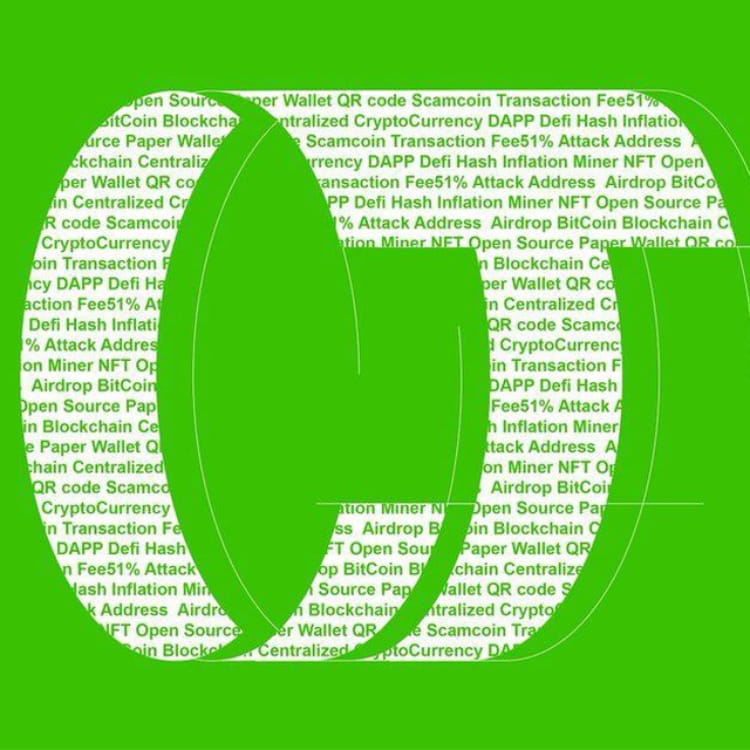deBridge價格走勢圖 (TWD/DBR)
最近更新時間 2025-12-15 17:15:28(UTC+0)
DBR/TWD 匯率換算器
DBR
TWD
1 DBR = 0.6408 TWD。目前 1 個 deBridge(DBR)兌 TWD 的價格為 0.6408。匯率僅供參考。
在所有主流交易平台中,Bitget 提供最低的交易手續費。VIP 等級越高,費率越優惠。
今日deBridge即時價格TWD
今日deBridge即時價格為 NT$0.6408 TWD,目前市值為 NT$1.23B。過去 24 小時內,deBridge價格跌幅為 4.86%,24 小時交易量為 NT$180.23M。DBR/TWD(deBridge兌換TWD)兌換率即時更新。
1deBridge的新台幣價值是多少?
截至目前,deBridge(DBR)的 新台幣 價格為 NT$0.6408 TWD。您現在可以用 1 DBR 兌換 NT$0.6408,或用 NT$ 10 兌換 15.61 DBR。在過去 24 小時內,DBR 兌換 TWD 的最高價格為 NT$0.6737 TWD,DBR 兌換 TWD 的最低價格為 NT$0.6399 TWD。
您認為今天 deBridge 價格會上漲還是下跌?
總票數:
上漲
0
下跌
0
投票數據每 24 小時更新一次。它反映了社群對 deBridge 的價格趨勢預測,不應被視為投資建議。
deBridge 市場資訊
價格表現(24 小時)
24 小時
24 小時最低價 NT$0.6424 小時最高價 NT$0.67
歷史最高價(ATH):
NT$1.72
漲跌幅(24 小時):
-4.86%
漲跌幅(7 日):
-4.30%
漲跌幅(1 年):
-35.58%
市值排名:
#480
市值:
NT$1,233,274,319.7
完全稀釋市值:
NT$1,233,274,319.7
24 小時交易額:
NT$180,233,573.98
流通量:
1.92B DBR
最大發行量:
--
deBridge 的 AI 分析報告
今日加密市場熱點查看報告
deBridge價格歷史(TWD)
過去一年,deBridge價格上漲了 -35.58%。在此期間,DBR兌TWD 的最高價格為 NT$1.72,DBR兌TWD 的最低價格為 NT$0.4155。
時間漲跌幅(%) 最低價
最低價 最高價
最高價 
 最低價
最低價 最高價
最高價 
24h-4.86%NT$0.6399NT$0.6737
7d-4.30%NT$0.6359NT$0.7736
30d-14.76%NT$0.5750NT$0.7920
90d-9.00%NT$0.5750NT$1.25
1y-35.58%NT$0.4155NT$1.72
全部時間+2.29%NT$0.4155(2025-06-13, 186 天前)NT$1.72(2024-12-21, 360 天前)
deBridge的最高價格是多少?
DBR兌換TWD的歷史最高價(ATH)為 NT$1.72,發生於 2024-12-21。相較於價格回撤了 deBridge。
deBridge的最低價格是多少?
DBR兌換TWD的歷史最低價(ATL)為 NT$0.4155,發生於 2025-06-13。相較於DBR歷史最低價,目前DBR價格上漲了 deBridge。
deBridge價格預測
什麼時候是購買 DBR 的好時機? 我現在應該買入還是賣出 DBR?
在決定買入還是賣出 DBR 時,您必須先考慮自己的交易策略。長期交易者和短期交易者的交易活動也會有所不同。Bitget DBR 技術分析 可以提供您交易參考。
根據 DBR 4 小時技術分析,交易訊號為 賣出。
根據 DBR 1 日技術分析,交易訊號為 賣出。
根據 DBR 1 週技術分析,交易訊號為 賣出。
DBR 在 2026 的價格是多少?
2026 年,基於 +5% 的預測年增長率,deBridge(DBR)價格預計將達到 NT$0.7095。基於此預測,投資並持有 deBridge 至 2026 年底的累計投資回報率將達到 +5%。更多詳情,請參考2025 年、2026 年及 2030 - 2050 年 deBridge 價格預測。DBR 在 2030 年的價格是多少?
2030 年,基於 +5% 的預測年增長率,deBridge(DBR)價格預計將達到 NT$0.8624。基於此預測,投資並持有 deBridge 至 2030 年底的累計投資回報率將達到 27.63%。更多詳情,請參考2025 年、2026 年及 2030 - 2050 年 deBridge 價格預測。
熱門活動
全球deBridge價格
目前deBridge用其他貨幣計價是多少?最近更新時間:2025-12-15 17:15:28(UTC+0)
DBR 兌換 ARS
Argentine Peso
ARS$29.47DBR 兌換 CNYChinese Yuan
¥0.14DBR 兌換 RUBRussian Ruble
₽1.63DBR 兌換 USDUnited States Dollar
$0.02DBR 兌換 EUREuro
€0.02DBR 兌換 CADCanadian Dollar
C$0.03DBR 兌換 PKRPakistani Rupee
₨5.73DBR 兌換 SARSaudi Riyal
ر.س0.08DBR 兌換 INRIndian Rupee
₹1.86DBR 兌換 JPYJapanese Yen
¥3.18DBR 兌換 GBPBritish Pound Sterling
£0.02DBR 兌換 BRLBrazilian Real
R$0.11如何購買deBridge(DBR)

建立您的免費 Bitget 帳戶
使用您的電子郵件地址/手機號碼在 Bitget 註冊,並建立強大的密碼以確保您的帳戶安全

認證您的帳戶
輸入您的個人資訊並上傳有效的身份照片進行身份認證

將 DBR 兌換為 TWD
在 Bitget 上選擇加密貨幣進行交易。
常見問題
deBridge 的目前價格是多少?
deBridge 的即時價格為 NT$0.64(DBR/TWD),目前市值為 NT$1,233,274,319.7 TWD。由於加密貨幣市場全天候不間斷交易,deBridge 的價格經常波動。您可以在 Bitget 上查看 deBridge 的市場價格及其歷史數據。
deBridge 的 24 小時交易量是多少?
在最近 24 小時內,deBridge 的交易量為 NT$180.23M。
deBridge 的歷史最高價是多少?
deBridge 的歷史最高價是 NT$1.72。這個歷史最高價是 deBridge 自推出以來的最高價。
我可以在 Bitget 上購買 deBridge 嗎?
可以,deBridge 目前在 Bitget 的中心化交易平台上可用。如需更詳細的說明,請查看我們很有幫助的 如何購買 指南。
我可以透過投資 deBridge 獲得穩定的收入嗎?
當然,Bitget 推出了一個 機器人交易平台,其提供智能交易機器人,可以自動執行您的交易,幫您賺取收益。
我在哪裡能以最低的費用購買 deBridge?
Bitget提供行業領先的交易費用和市場深度,以確保交易者能够從投資中獲利。 您可通過 Bitget 交易所交易。
相關加密貨幣價格
Smooth Love Potion 價格(TWD)Terra 價格(TWD)Shiba Inu 價格(TWD)Dogecoin 價格(TWD)Pepe 價格(TWD)Cardano 價格(TWD)Bonk 價格(TWD)Toncoin 價格(TWD)Pi 價格(TWD)Fartcoin 價格(TWD)Bitcoin 價格(TWD)Litecoin 價格(TWD)WINkLink 價格(TWD)Solana 價格(TWD)Stellar 價格(TWD)XRP 價格(TWD)OFFICIAL TRUMP 價格(TWD)Ethereum 價格(TWD)Worldcoin 價格(TWD)dogwifhat 價格(TWD)
您可以在哪裡購買deBridge(DBR)?
影片部分 - 快速認證、快速交易

如何在 Bitget 完成身分認證以防範詐騙
1. 登入您的 Bitget 帳戶。
2. 如果您是 Bitget 的新用戶,請觀看我們的教學,以了解如何建立帳戶。
3. 將滑鼠移到您的個人頭像上,點擊「未認證」,然後點擊「認證」。
4. 選擇您簽發的國家或地區和證件類型,然後根據指示進行操作。
5. 根據您的偏好,選擇「手機認證」或「電腦認證」。
6. 填寫您的詳細資訊,提交身分證影本,並拍攝一張自拍照。
7. 提交申請後,身分認證就完成了!
1 TWD 即可購買 deBridge
新用戶可獲得價值 6,200 USDT 的迎新大禮包
立即購買 deBridge
加密貨幣投資(包括透過 Bitget 線上購買 deBridge)具有市場風險。Bitget 為您提供購買 deBridge 的簡便方式,並且盡最大努力讓用戶充分了解我們在交易所提供的每種加密貨幣。但是,我們不對您購買 deBridge 可能產生的結果負責。此頁面和其包含的任何資訊均不代表對任何特定加密貨幣的背書認可,任何價格數據均採集自公開互聯網,不被視為來自Bitget的買賣要約。
DBR/TWD 匯率換算器
DBR
TWD
1 DBR = 0.6408 TWD。目前 1 個 deBridge(DBR)兌 TWD 的價格為 0.6408。匯率僅供參考。
在所有主流交易平台中,Bitget 提供最低的交易手續費。VIP 等級越高,費率越優惠。
DBR 資料來源
Bitget 觀點

Mason_Lee
4天前
$DBR
Price is stabilizing after a sharp pullback from the 0.02523 peak, showing controlled consolidation above short-term support. Momentum remains intact as long as the 0.0218 zone holds, with upside potential if volume re-accelerates.
Entry Zone: 0.02210 – 0.02270
TP1: 0.02340
TP2: 0.02430
TP3: 0.02520
Stop-Loss: 0.02160
Trend remains bullish while structure holds above support. Watching for a clean reclaim of MA10 to confirm continuation.
DBR-2.38%

ScalpingX
4天前
$DBR - Mcap 45.63M$ - 88%/ 24.5K votes Bullish
SC02 M15 - pending Long order. Entry lies within the LVN and is not affected by any weak zone, the projected stop-loss is around 4.53%. The uptrend is in the 92nd cycle, with an increase amplitude of 21.17%.
#TradingSetup #CryptoInsights
DBR-2.38%

_FortuneCrypto
2025/12/06 06:48
🔮 Trending Crypto Events by Finarc 🌟
🗓️ Event: 5.54MM Token Unlock
📅 Date: December 06, 2025
💰 Coin: RedStone (Pre-Market) ( $RED )
🗓️ Event: Solana Economic Zone
📅 Date: December 07, 2025
💰 Coin: General Event ( $CRYPTO ), deBridge ( $DBR ), ( $IO ),( $JUP ), ( $SOL )
RED-5.65%
JUP-4.12%

Cointime(1)
2025/11/20 04:06
deBridge基金会:deBridge积分第二季申领活动已上线
跨链互操作协议deBridge基金会发推表示,deBridge积分第二季申领活动已上线。所有符合条件的参与者现可申领DBR。3亿枚(占总供应量的3%)将作为第二季空投的一部分进行分发。申领窗口将于12月19日关闭。
DBR-2.38%
BGUSER-YG764FV7
2025/10/29 15:15
$DBR sell this scaam coin guys
DBR-2.38%
交易
理財
您可以在 Bitget 上交易 DBR。
DBR/USDT
現貨Bitget 平台新上架幣種的價格









